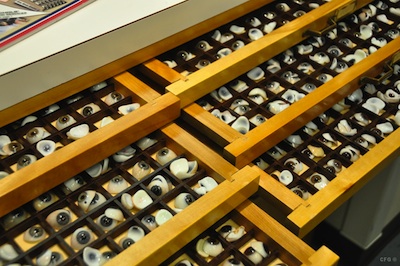A thank-you note to Whitney
November 21, 2018 • 13 Comments • Posted in blindness, guide dogs, Mike Knezovich, Seeing Eye dogsRemember when Mike read that New York Times story out loud to the two of us earlier this month? Yes. That one. The article about Seeing Eye dogs, and how a trip to New York City is part of the training we do:
The school’s training is done in a suburban setting far calmer than Midtown Manhattan, an hour’s drive away. But for its ultimate challenge, and to assess a dog’s focus, trainers take the student-dog pairs into Manhattan as something of a proving ground.
The New York Times story follows two women and their new dogs on that very route you and I took together seven years ago this month, maybe you still remember it? The van ride to the Port Authority, squeezing into a packed elevator, threading through subway turnstiles, avoiding oncoming commuters while climbing a staircase, straining to hear announcements over the noise of passing trains…. Friends who sent me the link to the New York Times story when it was published all asked similar questions. “You did that with Whitney? Weren’t you scared?” Not at that point of the trip. My fear wouldn’t kick in until we got off the subway and headed up to street level.
What you couldn’t know, dear Whitney, was that I’d taken that exact same route with another dog a year earlier, in 2010. That month at the Seeing Eye in 2010 had provided me with the promise of another long partnership with the new dog, a male Yellow Lab named Harper.
But a few months after Harper came home with me to Chicago, a vehicle turned right on red just as my Seeing Eye dog was leading me across an intersection. Harper did exactly what he’d been taught to do. He saved both our lives by pulling us away from the oncoming car–so hard that, when inspecting Harper’s harness afterwards, Mike noticed the metal harness was bent. Harper was a hero, but the trauma left him incapable of continuing his work as a Seeing Eye dog.
That near miss had left me more fearful of traffic than I’d been before, and now, here I was, back in Manhattan, this time with you, another new dog. And our first challenge after getting out of the subway station? Crossing a busy street. Well, not just one busy street. Columbus Circle. A traffic rotary. An entire circle of street crossings.
With sirens, jackhammers and horns blasting around us. Would you hear my commands? Could you keep us safe? Would you get us across, and across, and across?
You stopped at the curb, just as you were trained to do. I listened the best I could to judge the traffic, just as I was trained to do. When I determined the cars had stopped for the light in front of us, I commanded, “Whitney, forward!” You led me across that street safely, and then again at the next one in the circle, and then the next, too. And thousands of busy Chicago streets in our seven years together since then. As that article Mike read to us pointed out, “The dogs receive four months of training at the Seeing Eye, learning to guide around obstacles and obey commands, as well as street-crossing skills, including how to watch for traffic and keep their handlers safe from vehicles that might be turning or running lights.” More from that article:
While not exactly a test, Manhattan’s conditions present the dogs with intense conditions that can help reveal training aspects to work on.
“It’s a training experience that offers more than anywhere else we can take them,” said Dave Johnson, director of instruction and training at the Seeing Eye. “Almost anything can happen in one day in New York — it’s a culmination of sensory overload, even for humans.”
When Mike read this article to us a few weeks ago, I knew I’d be mentioning it in a blog post at some point. Thanksgiving seems an ideal time to do so. I am so thankful to you, Whitney, for working so hard to keep us safe. I am so grateful for the work The Seeing Eye does to make dogs available to those of us who are blind, I appreciate the New York Times for devoting the time and space to such a well-written and well-researched article about how it all works, and I’m thankful to Mike for reading it for us, and doing so, so much more by caring and looking out for us, too. I am one lucky woman, having you and Mike on my side. Happy Thanksgiving!
-Beth




